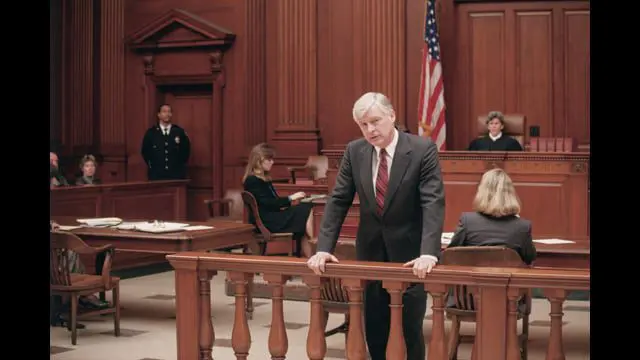Miranda rights are a fundamental aspect of the American criminal justice system, serving as a crucial safeguard for individuals who find themselves in police custody. These rights, derived from the landmark 1966 Supreme Court case Miranda v. Arizona, are designed to protect suspects from self-incrimination during police interrogations. Despite their prominence in popular culture, many people still have misconceptions about what Miranda rights entail and how they apply in real-world situations.
En Miranda warning has become an integral part of law enforcement procedures, requiring officers to inform suspects of their constitutional rights before conducting custodial interrogations. This warning typically includes the right to remain silent, the advisement that anything said can be used as evidence in court, the right to an attorney, and the provision of a court-appointed attorney if the suspect cannot afford one. However, the application and interpretation of Miranda rights continue to evolve through subsequent court decisions and legal challenges.
One of the most common misconceptions about Derechos Miranda is that they must be read immediately upon detención. In reality, law enforcement officers are only required to issue the Miranda warning when two specific conditions are met: the suspect is in custody, and the police intend to interrogate them. This means that statements made voluntarily or during non-custodial situations may still be admissible in court, even if the Miranda warning was not given.
El concepto de custodial interrogation is central to understanding when Miranda rights apply. Custody refers to a situation where a reasonable person would not feel free to leave, while interrogation involves direct questioning or actions designed to elicit incriminating responses. Determining whether a situation qualifies as custodial interrogation can be complex and often depends on the specific circumstances of each case.
When Miranda rights are violated, the consequences can be significant for both the suspect and the prosecution. Statements obtained in violation of Miranda rights are generally inadmissible as evidence in court, which can substantially weaken the prosecution’s case. This exclusionary rule serves as a powerful deterrent against law enforcement misconduct and helps ensure that suspects’ constitutional rights are respected throughout the criminal justice process.
It’s important to note that invoking Miranda rights is not an admission of guilt, but rather a constitutional protection that allows individuals to avoid self-incrimination. Suspects have the right to invoke these protections at any time during an interrogation, even if they initially waived their rights. Once invoked, law enforcement must cease questioning until an attorney is present or the suspect voluntarily reinitiated communication.
The scope of Miranda rights extends beyond just the initial warning. For example, the right to counsel under Miranda includes not only the right to have an attorney present during questioning but also the right to consult with an attorney before answering any questions. This provision ensures that suspects have access to legal advice before making potentially incriminating statements.
Another critical aspect of Miranda rights is the concept of renuncia. For a waiver of Miranda rights to be valid, it must be made knowingly, intelligently, and voluntarily. Courts carefully scrutinize the circumstances surrounding a waiver to ensure that it was not coerced or obtained through deception. Factors such as the suspect’s age, education level, and mental state can all play a role in determining whether a waiver was valid.
The application of Miranda rights to juvenile suspects presents unique challenges. Given the vulnerability and potential lack of understanding among minors, courts often apply a higher standard when evaluating the validity of Miranda waivers by juveniles. Some jurisdictions require the presence of a parent or guardian during juvenile interrogations, while others have implemented additional safeguards to ensure that young suspects fully comprehend their rights.
In recent years, there has been ongoing debate about the effectiveness and necessity of Miranda rights in the modern era. Critics argue that the warnings have become so ingrained in popular culture that they no longer serve their original purpose of informing suspects of their rights. However, proponents maintain that Miranda rights remain an essential protection against coercive police tactics and ensure that suspects are aware of their constitutional protections.
En evolution of technology has also raised new questions about the application of Miranda rights. For instance, the use of body cameras by law enforcement officers has provided new avenues for documenting Miranda warnings and subsequent interrogations. This technology can help resolve disputes about whether rights were properly administered and whether suspects voluntarily waived their rights.
One area where Miranda rights intersect with modern technology is in the context of pruebas digitales. As smartphones and other electronic devices become increasingly central to criminal investigations, questions arise about whether accessing password-protected information on a suspect’s device constitutes a form of self-incrimination protected by Miranda. Courts continue to grapple with these issues as technology evolves.
The global perspective on rights similar to Miranda varies significantly. While many countries have adopted protections against self-incrimination, the specific implementation and scope of these rights differ. For example, in the United Kingdom, the right to silence is acknowledged, but adverse inferences can be drawn from a suspect’s silence in certain circumstances, unlike in the United States.
It’s crucial to understand that Miranda rights are just one component of a broader set of constitutional protections afforded to criminal suspects. The Fourth Amendment’s protections against unreasonable searches and seizures, the Sixth Amendment’s right to counsel, and the Fourteenth Amendment’s due process clause all work in conjunction with Miranda rights to safeguard individual liberties within the criminal justice system.
En exclusionary rule, which prohibits the use of evidence obtained in violation of a suspect’s constitutional rights, plays a vital role in enforcing Miranda protections. This rule serves as a powerful deterrent against police misconduct by removing the incentive to violate suspects’ rights in pursuit of evidence. However, there are exceptions to the exclusionary rule, such as the “public safety” exception, which allows for the admission of un-Mirandized statements made in response to questions necessary to address an immediate threat to public safety.
One of the ongoing challenges in applying Miranda rights is determining what constitutes an unambiguous invocation of these rights. Courts have generally held that suspects must clearly and unequivocally assert their right to remain silent or request an attorney. Ambiguous statements like “Maybe I should talk to a lawyer” may not be sufficient to trigger the protections afforded by Miranda. This requirement has been criticized by some legal scholars who argue that it places an unfair burden on suspects who may be intimidated or confused during police questioning.
En timing of Miranda warnings can also be a critical factor in determining their effectiveness. While the warnings must be given before custodial interrogation begins, there is no specific requirement for how soon after arrest they must be administered. This flexibility can sometimes lead to situations where suspects make incriminating statements before being informed of their rights, raising questions about the admissibility of such statements.
Another important aspect of Miranda rights is the concept of fruit of the poisonous tree. This legal doctrine holds that evidence obtained as a result of an illegal search, arrest, or interrogation (including violations of Miranda rights) is generally inadmissible in court. This principle extends the reach of Miranda protections beyond just the suspect’s statements, potentially excluding physical evidence or witness testimony that was discovered as a result of information obtained in violation of Miranda.
The application of Miranda rights in cases involving foreign nationals has been a subject of international debate. The Vienna Convention on Consular Relations requires that foreign nationals arrested in the United States be informed of their right to contact their country’s consulate for assistance. While not directly related to Miranda, this requirement intersects with the broader principle of ensuring that suspects understand their rights within an unfamiliar legal system.
One area where Miranda rights have faced significant challenges is in the context of terrorism investigations. In the wake of the September 11 attacks, there were calls to create exceptions to Miranda for terrorism suspects, arguing that national security concerns should take precedence over individual rights. While no broad exception has been created, the public safety exception has been invoked in high-profile terrorism cases to justify limited questioning without Miranda warnings.
En role of Miranda rights in plea bargaining is another important consideration. The vast majority of criminal cases in the United States are resolved through plea agreements rather than trials. Critics argue that the threat of having incriminating statements admitted at trial can pressure suspects into accepting plea deals, even if they might have viable Miranda-based defenses. This dynamic raises questions about the true protective value of Miranda rights in a system dominated by plea bargaining.
The intersection of Miranda rights and problemas de salud mental presents unique challenges for the criminal justice system. Suspects with mental illnesses or cognitive impairments may have difficulty understanding or exercising their Miranda rights. Courts have grappled with how to ensure that these vulnerable individuals are afforded adequate protection while still allowing for effective law enforcement.
En training of law enforcement officers in properly administering Miranda warnings and respecting suspects’ rights is crucial to the effective implementation of these protections. Many police departments have developed standardized procedures and training programs to ensure that officers understand the nuances of Miranda rights and can navigate the complex legal landscape surrounding custodial interrogations.
One emerging area of concern is the application of Miranda rights in the context of social media investigations. As law enforcement increasingly uses social media platforms to gather evidence and communicate with suspects, questions arise about whether and how Miranda protections apply to these digital interactions. Courts are still developing frameworks for addressing these novel situations.
En psychological impact of Miranda warnings on suspects has been the subject of extensive research. Studies have shown that the way in which Miranda rights are presented can significantly affect a suspect’s likelihood of waiving those rights. Factors such as the tone of voice used by officers, the pacing of the warning, and the suspect’s prior experiences with law enforcement can all influence how Miranda rights are understood and exercised.
El concepto de pre-Miranda silence has been a topic of legal debate. While statements made after a suspect has been Mirandized and invoked their right to remain silent are generally inadmissible, the use of a suspect’s silence before Miranda warnings are given is less clear-cut. Some courts have allowed prosecutors to use pre-Miranda silence as evidence of guilt, while others have found this practice to violate the Fifth Amendment.
En cultural and linguistic diversity of the United States presents challenges in ensuring that Miranda rights are effectively communicated to all suspects. Law enforcement agencies often need to provide Miranda warnings in multiple languages and consider cultural factors that may affect a suspect’s understanding of their rights. This is particularly important in cases involving immigrants or non-native English speakers.
En role of Miranda rights in civil proceedings is another area of legal complexity. While Miranda warnings are primarily associated with criminal cases, statements obtained in violation of Miranda can sometimes be used in civil proceedings. This distinction highlights the importance of understanding the specific protections afforded by Miranda and their limitations.
En impact of Miranda rights on police interrogation techniques has been significant. Law enforcement agencies have had to adapt their questioning strategies to comply with Miranda requirements while still effectively gathering information. This has led to the development of more sophisticated interrogation techniques that aim to elicit information without running afoul of Miranda protections.
En intersection of Miranda rights and DNA evidence raises interesting legal questions. As DNA testing becomes more prevalent in criminal investigations, courts have had to consider whether requiring a suspect to provide a DNA sample constitutes a form of self-incrimination protected by Miranda. Generally, courts have held that DNA samples are more akin to fingerprints or photographs and do not require Miranda warnings.
En application of Miranda rights to undercover operations presents unique challenges. Courts have generally held that Miranda warnings are not required when suspects voluntarily speak to undercover officers, even if they are in custody for other reasons. This exception is based on the rationale that the coercive atmosphere Miranda was designed to protect against is not present in undercover situations.
En role of technology in documenting Miranda warnings has become increasingly important. Many law enforcement agencies now use standardized forms or electronic devices to ensure that Miranda warnings are consistently and accurately delivered. These tools can help protect both suspects’ rights and officers’ actions from later challenges.
En impact of Miranda rights on cold case investigations is an area of ongoing legal development. As advances in forensic science allow for the reopening of long-dormant cases, questions arise about how to apply Miranda protections to interrogations conducted decades after the initial investigation. Courts must balance the need for justice in these cases with the fundamental protections afforded by Miranda.
En intersection of Miranda rights and domestic violence cases presents unique challenges. The often-complex dynamics of domestic relationships can complicate the application of Miranda rights, particularly in situations where both parties may be considered both suspects and victims. Law enforcement officers must navigate these sensitive situations while ensuring that all parties’ rights are respected.
En role of Miranda rights in cases involving multiple jurisdictions can be complex. When investigations span across state lines or involve both state and federal authorities, questions may arise about which jurisdiction’s interpretation of Miranda applies. This can be particularly relevant in cases where different courts have adopted varying standards for issues like the clarity required to invoke Miranda rights.
En impact of Miranda rights on police body camera policies is an emerging area of interest. As more law enforcement agencies adopt body cameras, questions arise about how these devices should be used to document the administration of Miranda warnings and subsequent interrogations. Some argue that body cameras provide an objective record of these interactions, while others raise concerns about privacy and the potential for selective recording.
En application of Miranda rights to non-traditional custodial situations continues to evolve. For example, courts have had to consider whether Miranda warnings are required during traffic stops, border crossings, or when individuals are questioned in their homes. These situations often require a case-by-case analysis to determine whether the encounter rises to the level of custodial interrogation.
En role of Miranda rights in cases involving confidential informants presents unique legal challenges. Courts must balance the need to protect the identity of informants with the rights of suspects to confront their accusers and challenge the evidence against them. This can sometimes lead to complex legal maneuvering to preserve both the efficacy of law enforcement operations and the constitutional rights of the accused.
En impact of Miranda rights on juvenile justice reform has been significant. As society’s understanding of adolescent development has evolved, there has been a growing recognition that juveniles may require additional protections to ensure that they fully understand and can effectively exercise their Miranda rights. This has led to calls for reforms such as requiring the presence of an attorney during all juvenile interrogations.
En intersection of Miranda rights and restorative justice programs raises interesting questions about the role of self-incrimination in alternative dispute resolution processes. As more jurisdictions adopt restorative justice approaches, which often involve offenders taking responsibility for their actions, there is a need to balance the protections afforded by Miranda with the goals of these programs.
En application of Miranda rights in tribal courts presents unique challenges due to the complex relationship between tribal, state, and federal jurisdictions. While the Indian Civil Rights Act of 1968 extended many constitutional protections, including those similar to Miranda, to tribal courts, the specific implementation can vary across different tribal justice systems.
En role of Miranda rights in cases involving international extradition adds another layer of complexity to cross-border criminal investigations. Courts must consider how Miranda protections apply when suspects are questioned by foreign law enforcement agencies or when statements made abroad are sought to be used in U.S. courts.
En impact of Miranda rights on police recruitment and retention is an often-overlooked aspect of criminal justice policy. The complexities of properly administering Miranda warnings and conducting lawful interrogations can be a significant source of stress for law enforcement officers, potentially affecting job satisfaction and retention rates.
As we continue to grapple with the complexities of Miranda rights in the 21st century, it’s clear that these protections remain a cornerstone of the American criminal justice system. While challenges and controversies persist, the fundamental principle of protecting individuals from self-incrimination during police interrogations continues to shape law enforcement practices and legal proceedings. As society evolves and new technologies emerge, the application and interpretation of Miranda rights will undoubtedly continue to adapt, ensuring that this vital safeguard remains relevant and effective in protecting the rights of all individuals within the criminal justice system.
Fuentes:
- https://www.law.cornell.edu/wex/miranda_warning
- https://www.ncsl.org/civil-and-criminal-justice/miranda-warnings-and-waiver-of-rights
Citations:
https://www.mvsllp.com/blog/2024/july/understanding-your-miranda-rights-what-you-need-/
https://concept.paloaltou.edu/resources/translating-research-into-practice-blog/most-americans-do-not-have-a-complete-understanding-of-their-miranda-rights/
https://mainemorningstar.com/2024/02/15/proposal-to-expand-miranda-rights-founders-as-related-case-pends-in-maine-court/
https://www.britannica.com/topic/Miranda-warning
https://www.legaldefense.com/legal-blogs/2024/july/what-happens-when-miranda-rights-arent-read-/
https://www.bryanfagan.com/blog/2024/october/common-myth-about-miranda-rights/
https://supreme.justia.com/cases-by-topic/miranda-rights/









